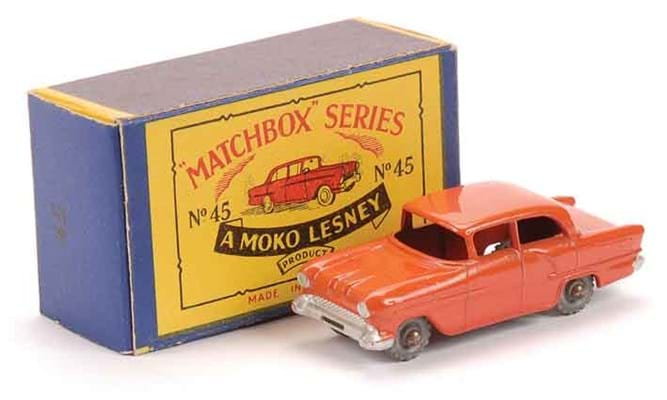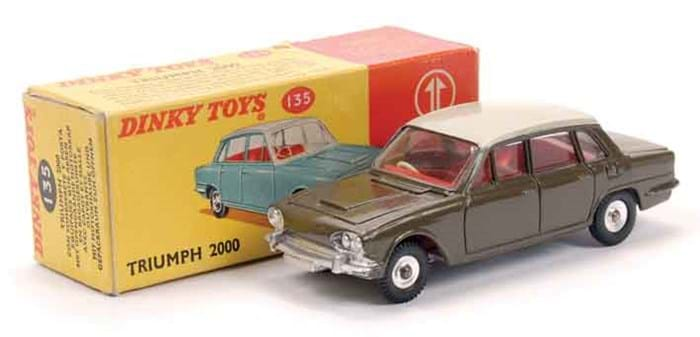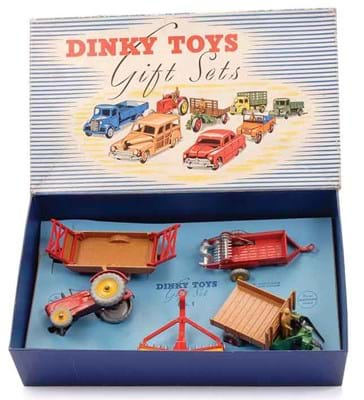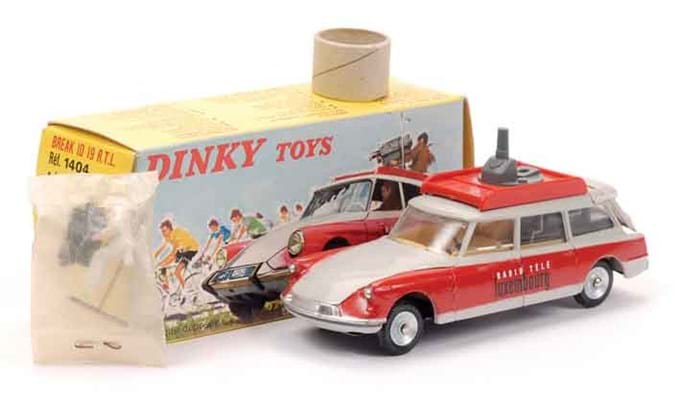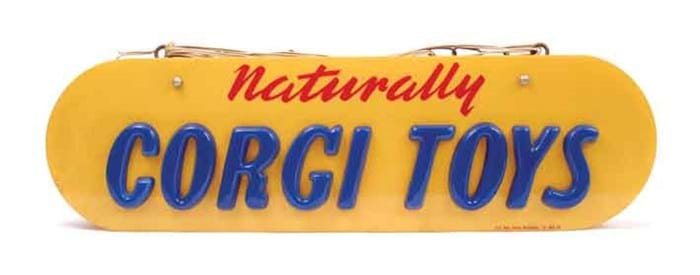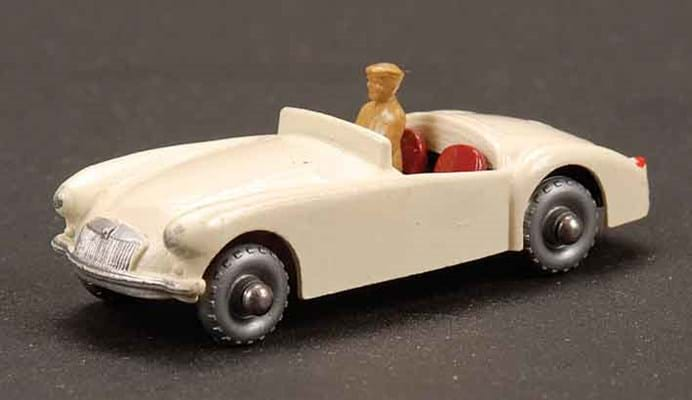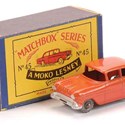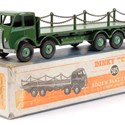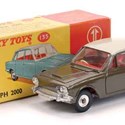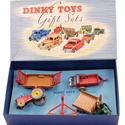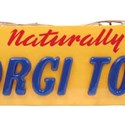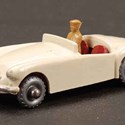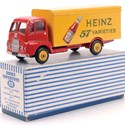Their saleroom on the outskirts of a no-nonsense town has rooms and staff dedicated to the specific tasks of cataloguing via voice recognition technology, remote bidding and packing.
Oh, and with sales across the internet now accounting for 33 per cent of annual transactions, an audience in the room that can typically be counted on two hands.
Of course, elements of the Vectis 'mail order' operation - the brainchild of proprietor Bryan Goodall, who operates a warehousing business from the same site - are made easier by the nature of the merchandise they sell.
The majority of toys were produced in large multiples and are easily catalogued; a (generally) accepted language exists across the collecting community regarding condition; the average lot is easily packed and posted while, equally important, is a large pool of buyers comfortable with the computer age and at ease with the idea of buying sight unseen.
But there are worse ways for a regional auctioneer to hone his/her craft than with a visit to the Thornaby industrial estate. The Fred J. Matt collection of diecast models offered on September 8-10 was among the firm's flagship events for 2009. So attendance in the room across the three sale days did occasionally touch the dizzy heights of 15.
Mr Matt, who now lives in Mayfair, is not atypical of Vectis's most affluent clients. Brought up in south-eastern Pennsylvania, where as a child in 1967 he played with his first Matchbox toys, he turned to collecting a plethora of diecast marques in the 1980s while he pursued a career as a trader on Wall Street. By 2004, and the sale of his hedge fund boutique to a Parisian bank, his collection of diecast models resided in climate-controlled storage in both London and New York and numbered 2250 pieces.
Complete with biography, pictures of his children and recollections from his family, Matt explained his choice for the catalogue front cover illustration - a Dinky No 932 Wayne school bus that reminded him so much of his schooldays in Abington, Pennsylvania. Nostalgia remains a key player in the toy market, but the focus here was not just upon models from Matt's youth but also the diecast toys of the 1950s. Together these 'golden age' decades represent the most popular period in collecting today, primarily for the charm of the models but also (when investment is a consideration) because they have largely escaped the metal fatigue endemic among pre-War toys and the dominance of plastic that can be subject to deterioration in later issues.
Added to this was a relatively large holding of export productions that reflected purchases made as far afield as Eureka, South Dakota, Ruthin, Wales, Maun, Botswana and Saigon, Vietnam.
Lesney's Matchbox toys had been this collector's first love and his collection had grown to include many rare models and most (if not all) had survived in very fine order. His Chevy Impala yellow taxi cab with grey rather than the typical black wheels was rated mint in a near mint box and sold at £2000, while his orange-red Vauxhall Victor was deemed 'excellent plus' and came in a near-mint box. The yellow version of this model is quite common (one near-mint example sold here for £60) but this rare colourway, the first the auctioneers had sold, took £3200.
Other rare Lesney issues included a mint Ferrari Berlinetta (no.75b) in a nearmint box and a Volkswagon 1600TL in metallic purple (no.67b) that was mint apart from a minor factory mark. Both sold above estimate at £520 each. A surprise was an off-white MG sports car (no.19b) that was in 'excellent' condition but lacked its box. Typically the estimate of £60-80 would have sufficed, but it sold at £440. A box would not be difficult to find. Matt had been unusual in collecting so many different marques. There were sections here for Tekno, Budgie, Spot-On and Corgi, but naturally Dinky toys were dominant.
Among the most iconic Dinky models of the Golden Age period are the series of Foden wagons that were first issued in the late 1940s. There are a number of variants and Matt owned examples of most of them. Dinky number 505, the flatbed truck with chains from 1952, was available here in both of its 'first cab' colourways.
The example in maroon is generally considered the rarer model but the presence of some retouching around the wheelarches was the sort of apparently minor 'injury' that prompts resistance among 'investment grade' collectors.
It was allowed to sell at a relatively modest £2200, a fraction of the £10,200 achieved for a near-mint example in 2003. If there has been a change in the collecting landscape since Matt was buying heavily in the 1980s and early 90s, it is that collectors are becoming fussier. Boxes, in particular, have become subject to the same rigorous condition assessment previously reserved for the toys themselves.
The price for the Foden truck in green was a stronger one and it reflected its near-mint condition. It took £3200 - among the highest prices achieved for this model but still shy of the £4400 paid for another, again at Vectis in 2003.
The next generation of Dinky wagons were the Leyland Octopus series. The standard model (no.934) available from 1958 to 1962 comes in green and yellow (two examples here took £160 and £180) but the tail end of the production run saw the colour scheme change to blue and lemon. One here took £1800 on account of its superb condition.
Model no.935 is the Leyland Octopus with flat bed and chains that received a production run from 1964 to 1966. The mint example in an excellent pictorial box brought £2200.
There were a large number of French models and these did particularly well. A trophy lot was a rare French market 'Coffret Cadeau Tourisme' containing a Ford Vedette, Peugeot 203, Citroen 2CV, Simca Aronde and a Buick Roadmaster - the cars near mint in a 'good plus' box - sold at £1700.
Also popular was a Radio Luxembourg Citroën estate car with its cameraman still sealed in its original paper bag. The remarkable (and free) Vectis online database of sold lots includes 14 other examples of this model but none that has made as much as £540.
But it's not all about high prices, especially for those just starting off with the collecting bug. Importantly, for the collectors who wished to acquire elements of a 20-year collecting odyssey on a more modest budget, Vectis avoided the temptation to group models into large multiple lots and were happy to see many lots knocked down well below £100.

